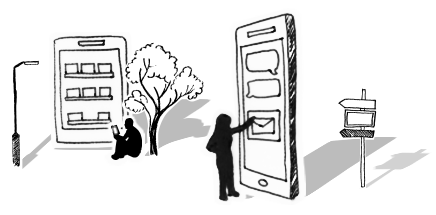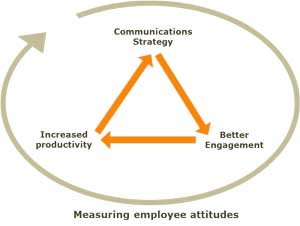




Why Is Measuring Internal Communications Often Overlooked?
The value of measuring internal communications can’t be understated, particularly in times of change. So why the reluctance?
Many people feel they’ve been engaged to create a strategy and deliver it, and then that’s it. Some may feel a slight uneasiness when approaching the measurement of their plan as it may uncover results they don’t want to see. Others may not see the value in it, or just plain forget!
Why is it important?
Useful measurement techniques including staff surveys, can track shifts in employee attitudes and behaviour which, in turn, can help determine strategy and improve future communication and change management. Effective communication can make employees feel secure and informed, resulting in higher satisfaction scores and levels of employee engagement.
Satisfied employees generate better customer relations and service, leading to higher profits.

In project management, measuring employee engagement with communications is vital to make sure that communications are supporting the achievement of the business objectives underpinning the project or programme.
CEOs now have a keen eye on how robust project management systems really are, including how closely linked they are to the overall business strategy.
The messages have to stick, to support the long terms behaviour change needed, so measuring understanding and the effectiveness of communications is vital.
Common hurdles
Measurement is often seen as an afterthought, or occurs following a specific challenge around how well you are doing your job.
If it’s the latter, then it could mean a lengthy, sometime expensive, task which takes you away from doing what you’re supposed to be.
But it needn’t be like this. Being able to measure and evaluate is more of a mind-set. If we are able to consider ‘is what I’m doing worthwhile?’ or ‘how can I make this better?’ for everything we do, then it can be ingrained into how we work.
Some communications channels are relatively easy to measure such as websites, or newsletters, but for others it may be time to get a little creative.
For instance, if you’ve organised a team briefing or presentation, don’t hand out feedback forms at the end as they will invariably not get filled out. Try emailing just one question out to all attendees, such as ‘On a scale of one to ten, how informed do you feel about…?’ or ‘On a scale of one to ten, how committed are you to…’ All the attendees will need to do is to respond with one number. Surely everyone has time to do that.
If the value of what you’re doing can’t be measured then it’s worth thinking of another way of doing it.
So what are my tips?
- Avoid survey fatigue– annual surveys have their place, but regular pulse and temperature checks can easily annoy your audience, particularly if nothing is done as a result of the feedback received.
- Talk to people– anecdotal feedback can be undervalued, but often provides great insight.
- Make the time – don’t see it as ‘something extra’; plan some proper time to analyse your data and draw conclusions.
- Say thank you – respond to those who’ve taken the time to tell you their views. You don’t want them thinking that their feedback has disappeared down some black hole never to be found again.
- Take action – do something with it; and tell your audience what you’ve done. They’ll be more likely to give it again in the future.
To get the latest change tips, advice and guidance directly to your inbox, sign up to our monthly Business Change Digest.

